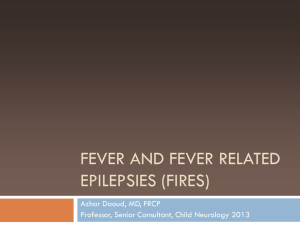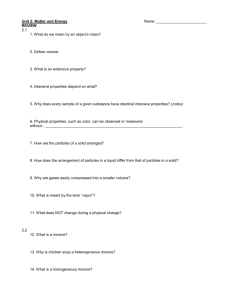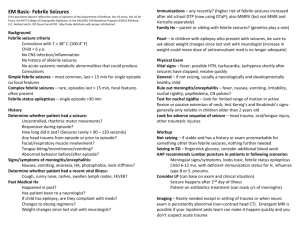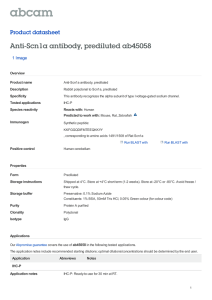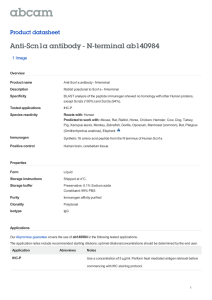METHOD AND DEVICE FOR IDENTIFYING ATTRIBUTE FOR
advertisement
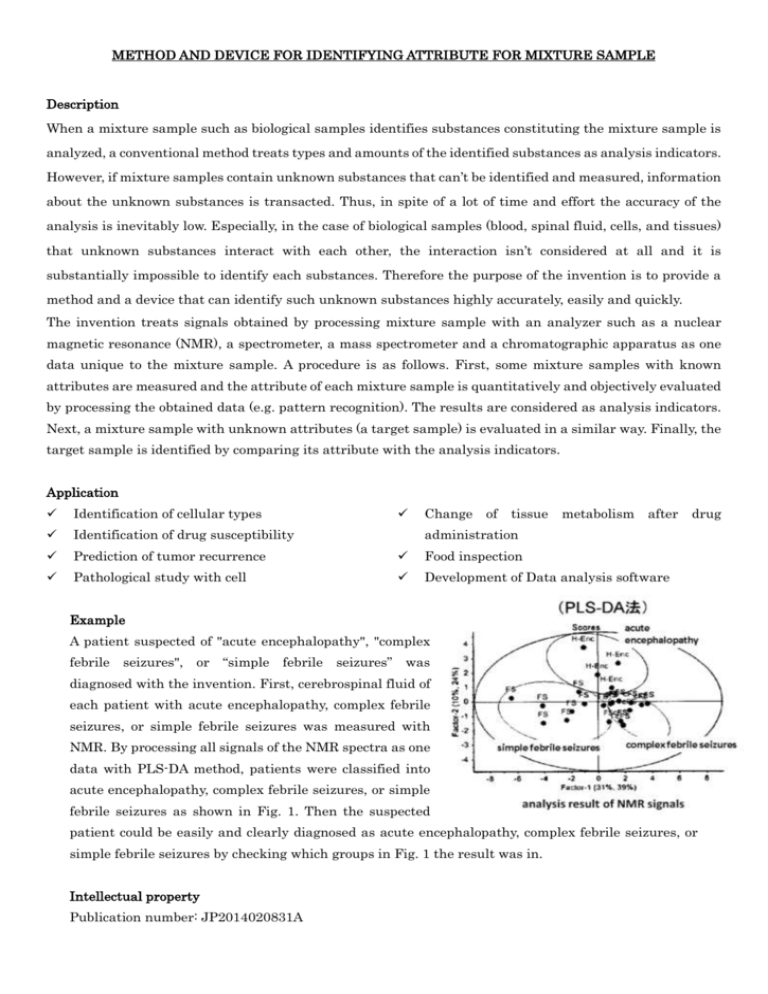
METHOD AND DEVICE FOR IDENTIFYING ATTRIBUTE FOR MIXTURE SAMPLE Description When a mixture sample such as biological samples identifies substances constituting the mixture sample is analyzed, a conventional method treats types and amounts of the identified substances as analysis indicators. However, if mixture samples contain unknown substances that can’t be identified and measured, information about the unknown substances is transacted. Thus, in spite of a lot of time and effort the accuracy of the analysis is inevitably low. Especially, in the case of biological samples (blood, spinal fluid, cells, and tissues) that unknown substances interact with each other, the interaction isn’t considered at all and it is substantially impossible to identify each substances. Therefore the purpose of the invention is to provide a method and a device that can identify such unknown substances highly accurately, easily and quickly. The invention treats signals obtained by processing mixture sample with an analyzer such as a nuclear magnetic resonance (NMR), a spectrometer, a mass spectrometer and a chromatographic apparatus as one data unique to the mixture sample. A procedure is as follows. First, some mixture samples with known attributes are measured and the attribute of each mixture sample is quantitatively and objectively evaluated by processing the obtained data (e.g. pattern recognition). The results are considered as analysis indicators. Next, a mixture sample with unknown attributes (a target sample) is evaluated in a similar way. Finally, the target sample is identified by comparing its attribute with the analysis indicators. Application Identification of cellular types Identification of drug susceptibility Prediction of tumor recurrence Food inspection Pathological study with cell Development of Data analysis software Change of tissue metabolism after drug administration Example A patient suspected of "acute encephalopathy", "complex febrile seizures", or “simple febrile seizures” was diagnosed with the invention. First, cerebrospinal fluid of each patient with acute encephalopathy, complex febrile seizures, or simple febrile seizures was measured with NMR. By processing all signals of the NMR spectra as one data with PLS-DA method, patients were classified into acute encephalopathy, complex febrile seizures, or simple febrile seizures as shown in Fig. 1. Then the suspected patient could be easily and clearly diagnosed as acute encephalopathy, complex febrile seizures, or simple febrile seizures by checking which groups in Fig. 1 the result was in. Intellectual property Publication number: JP2014020831A Reference Asano T, Hirakawa K, Koike K, Ohno Y, Fujino O. Visualization of different characteristics of cerebrospinal fluid with acute encephalopathy and febrile seizures using pattern recognition analysis of 1H NMR. Pediatr Res. 2015 Jan;77(1-1):70-4.
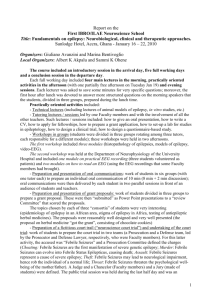
![Anti-Nav1.7 antibody [S68-6] - C-terminal (Biotin) ab183416](http://s2.studylib.net/store/data/012700010_1-91302de8adf12cece525fff12806561f-300x300.png)
![Anti-Nav1.7 antibody [S68-6] - C-terminal (HRP) ab183415](http://s2.studylib.net/store/data/012700012_1-f61981161b0130b1425b18a53b545f85-300x300.png)
